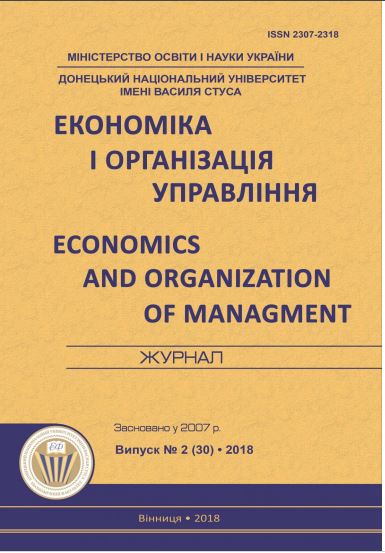Interfirm integration as a key factor for the emergence of global distribution networks.
DOI:
https://doi.org/10.31558/2307-2318.2018.2.4Keywords:
distribution, distribution networks, integration, global distribution networksAbstract
The challenges of modern economic environment stimulate the emergence and development of business alliances, some of which go beyond national markets and enter the global business space in the form of networks. In the sphere of distribution, global distribution networks are formed, which carry out business activities through partners from different countries, achieving common strategic goals and each of them benefiting. Based on the derived core features and principles of how distribution networks operate, this article presents the author’s own definition of their global dimension. Besides, viewing integration processes in economy as a key factor for the formation of such interfirm networks, the article systematizes the historical stages of their distribution development. An emphasis is also placed on the various forms of manifestation of these networks and the synergistic effects for the participating partners. By clarifying the specifics of global distribution networks, the paper highlights their importance as an emanation of the modern development of integration processes in global distribution.References
Achrol, R., Kotler, P. (1999). Marketing in the Network Economy. The Journal of Marketing, 63.
Anderson, J., Hakanson, H., Johanson, J. (1994). Dyadic business relationships within a business network context . Journal of marketing, 58, 1-15.
Berliner, D., Regan Greenleaf, A., Lake, M., Levi, M., Noveck, J. (2015). Governing Global Supply Chains: What We Know (and Do Not) About Improving Labor Rights and Working Conditions. Annual Review of Law and Social Sciences, 11, 1- 17.
Bizzi, L., Langley, A. (2012). Studying processes in and around networks. Industrial Marketing Management, 41(2), 224-234.
Borch, O., Arthur, M. (1995). Strategic networks among small firms: Implications for strategy research methods. Journal of Management Studies, 32, 420-441.
Genova, Zh., Kotsev, Ts. (2011). Sinergiyata i sinergiyniyat efekt kato firmena strategiya. Ot Sinergiya i konkurentosposobnost na balgarskite predpriyatiya. Modeli na sinergiya (pp. 8-10).
Grigorova, V. (2017). Marketingovi mrezhi ot firmi: sastoyanie i strategicheski resheniya v turisticheskiya sektor. Stopanski svyat, AI “Tsenov”.
Hudson, R. (2001). Producing Places. New York: Guilford Press.
Iacobucci, D., Hopkins, N. (1992). Modeling dyadic interactions and networks in marketing. Journal of marketing research, 29(1), 5-17.
Larson, A. (1992). Network dyads in entrepreneurial settings: A study of the governance of exchange relationships. Administrative Science Quarterly, 37, 761-774.
Lozanov, O. (2008). Mezhdunarodnite strategicheski sayuzi – efektiven otgovor na predizvikatelstvata na globalniya pazar. Ikonomicheski alternativi, 3, 41-52.
Mohr, J., Spekman, R. (1994). Characteristics of partnership success: Partnership attributes, communications behavior, and conflict resolution techniques. Strategic Management Journal, 15, 135-152.
Palpacuer, F. (2000). Competence-based strategies and global production networks: A discussion of current changes and their implications for employment. The Journal of Global Business and Political Economy, 4(4), 353-400.
Sheth, J. (1973). A model of industrial buyer behavior. Journal of Marketing, 37, 50- 56.
Speakman, R., Johnston, W. (1986). Relationship management: Managing selling and buying centres. Journal of Business Research, 14, 519-531.
Spekman, R. (1996). A Reflection on Two Decades of Business-to-Business Marketing Research: Implications for Understanding Marketing Relationships and Networks. From D. Iacobucci, Networks in Marketing (pp. 8-18). Thousand Oaks: SAGE.
Sriram, V., Krapfel, R., Spekman, R. (1992). Antecedents to buyer seller collaboration: An analysis from the buyer’s perspective. Journal of Business Research, 25, 303-320.
Stern, L., Sheer, L. (1991). Power and influence in marketing channel research: Observations on the state of the art. From G. Frazier, Advances in distribution channel research. (pp. 259-275). Greenwich, JAL, CT.
Webster, F., Wind, Y. (1972). A general model for understanding organizational buying behavior. Journal of Marketing, 36, 12-19.

